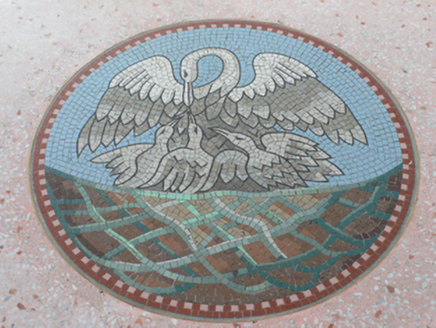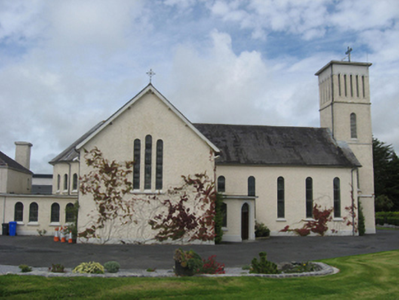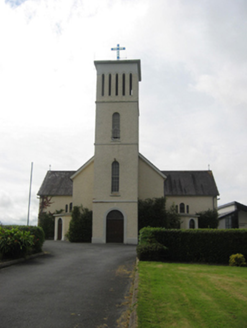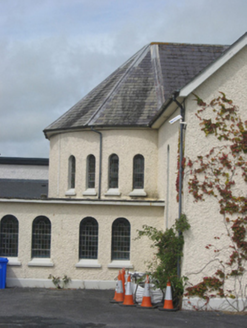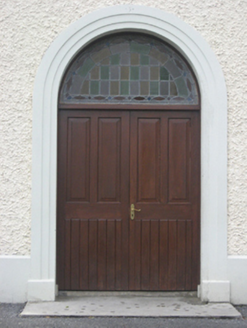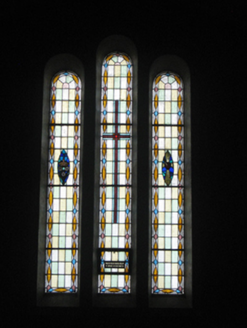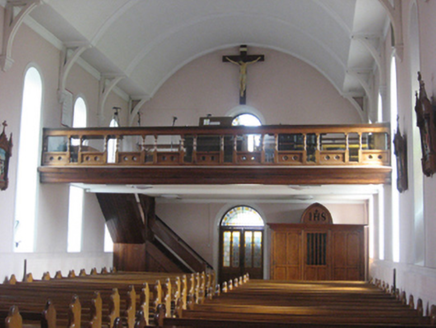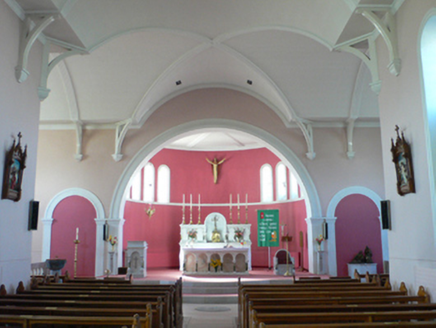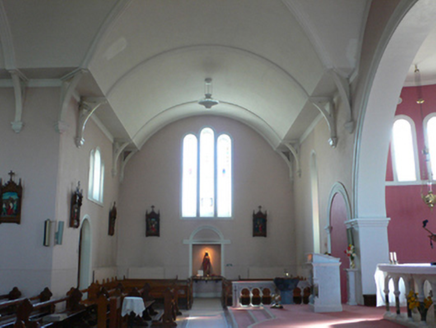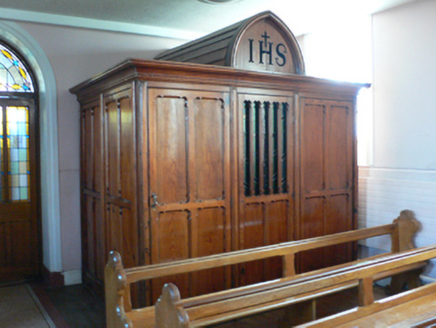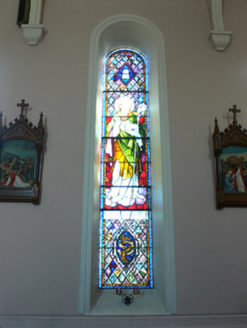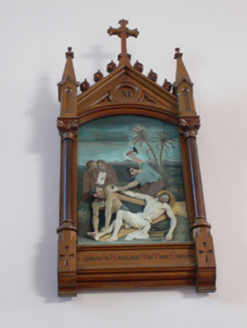Survey Data
Reg No
30411701
Rating
Regional
Categories of Special Interest
Architectural, Historical, Social
Previous Name
Saint Imor's Catholic Chapel
Original Use
Church/chapel
In Use As
Church/chapel
Date
1930 - 1950
Coordinates
180925, 212554
Date Recorded
12/08/2009
Date Updated
--/--/--
Description
Freestanding T-plan Roman Catholic Church, built c.1940 with semi-circular apse to west end, five-bay nave, single-bay transepts, four-stage tower to east end, canted flat-roof porches to re-entrant corners of nave and transepts, and flat-roof sacristy to south-west connecting to three-bay two-storey presbytery. Pitched slate roofs to nave and transepts, with wrought-iron cross finials, and cast-iron rainwater goods. Roughcast rendered walls with smooth rendered plinth, tower having limestone string courses between stages and smooth rendered above top stage openings. Round-headed lancet windows throughout, triple-light to transept gables and groups of four clerestorey windows flanking altar, with sloping sills and stained glass. Tower has round-headed window openings to middle stages, nine-over-twelve pane timber sliding sash to second stage and timber louvers to third stage, lancet openings to other stages, with groups of five to top stage. Round-headed main doorway to east side of tower and further doorways to porches, having rendered surrounds and replacement timber double-leaf doors with stained-glass overlights. Barrel-vaulted ceiling to interior, roof supported on timber brackets and hanging posts on corbels. Carved timber gallery and double-leaf glazed timber door to nave with stained glass. Carved timber Stations of the Cross. Presbytery has hipped slate roof, centrally placed pair of rendered chimneystacks, pebbledashed walls, square-headed replacement uPVC windows, round-headed doorway with glazed porch having hipped slate roof. Recent single-storey parish hall to north-west. Tarmacadamed surface around church, with lawns to front and sides.
Appraisal
This church is a good example of a well designed and detailed mid-twentieth-century Catholic church. It draws on Romanesque architecture with its use of round arches and grouping of openings. The inclusion of a tower, and its position, harks back to churches of a century earlier. However, the flat-roofed and canted elements are very much of the twentieth century. Artistic elements inside the building include the attractive carved timber gallery and Stations of the Cross, and the stained glass. Its location, on rising ground on a key approach to the village of Killimor, makes a pleasant setting and the building eye catching. The church is part of group of parish buildings that also includes the contemporary parochial house and more recent parish centre.
